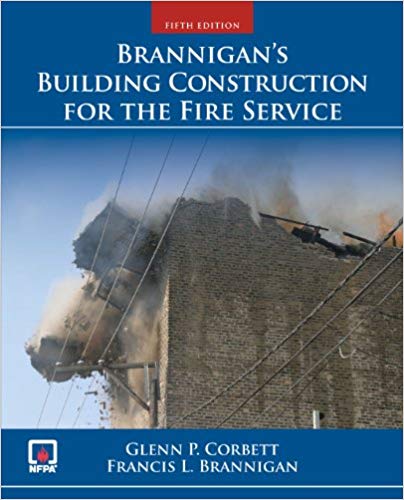Each new print copy of Brannigan's Building Construction for the Fire Service, Enhanced Fifth Edition also includes Navigate 2 Advantage Access that unlocks a complete eBook, Study Center, homework and Assessment Center, and a dashboard that reports actionable data. Experience Navigate 2 today at www.jblnavigate.com/2.
For over forty years, Brannigan's Building Construction for the Fire Service has been the fire service's most trusted and comprehensive building construction resource available. Now in its Enhanced Fifth Edition, this bestselling resource continues to honor Frank Brannigan's legacy by instilling his passion for detail and extensive practical experience. His motto, "Know your buildings," impacts every aspect of this text.
This Enhanced Fifth Edition now features:
Coverage of the National Fire Academy's Fire and Emergency Services in Higher Education (FESHE) Building Construction for Fire Protection course objectives.
New stand-alone chapter on New, Light, Green (Solar), and Modular Construction.
Enhanced emphasis on tactical considerations found throughout the text.
Trust Brannigan's Building Construction for the Fire Service, Enhanced Fifth Edition Includes Navigate 2 Advantage Access to provide straightforward information on different building types and their unique hazards needed to keep fire fighters safe on the job.
چکیده فارسی
هر نسخه چاپی جدید Brannigan's Building Construction for the Fire Service، ویرایش پنجم پیشرفته همچنین شامل Navigate 2 Advantage Access است که یک کتاب الکترونیکی کامل، مرکز مطالعه، تکالیف و مرکز ارزیابی، و داشبوردی را که دادههای عملی را گزارش میکند، باز میکند. Navigate 2 را امروز در www.jblnavigate.com/2 تجربه کنید.
برای بیش از چهل سال، ساخت و ساز ساختمان برانیگان برای خدمات آتش نشانی قابل اعتمادترین و جامع ترین منبع ساخت و ساز ساختمان خدمات آتش نشانی بوده است. اکنون در نسخه پنجم پیشرفته خود، این منبع پرفروش به ارج نهادن به میراث فرانک برانیگان با القای اشتیاق او به جزئیات و تجربه عملی گسترده ادامه می دهد. شعار او، "ساختمان های خود را بشناسید" بر همه جنبه های این متن تاثیر می گذارد.
این نسخه پنجم پیشرفته اکنون دارای ویژگی های زیر است:
پوشش اهداف دوره آموزشی آتش نشانی و خدمات اضطراری آکادمی ملی آتش نشانی در ساخت و ساز ساختمان برای حفاظت از آتش (FESHE).
فصل جدید مستقل در مورد ساخت و ساز جدید، نور، سبز (خورشیدی) و مدولار.
تأکید بیشتر بر ملاحظات تاکتیکی که در سراسر متن یافت می شود.
به ساخت و ساز ساختمان Brannigan برای خدمات آتش نشانی اعتماد کنید، ویرایش پنجم پیشرفته شامل Navigate 2 Advantage Access برای ارائه اطلاعات ساده در مورد انواع ساختمان ها و خطرات منحصر به فرد آنها که برای ایمن نگه داشتن آتش نشانان در محل کار لازم است.
ادامه ...
بستن ...
Ebook details:
عنوان: Brannigan's Building Construction for the Fire Service
نویسنده: Glenn P. Corbett, Francis L. Brannigan
ناشر: Jones & Bartlett Learning; 5 edition (August 3, 2016)
زبان: English
شابک: 1284136132, 978-1284136135
حجم: 20 Mb
فرمت: Epub + Converted pdf
ادامه ...
بستن ...










